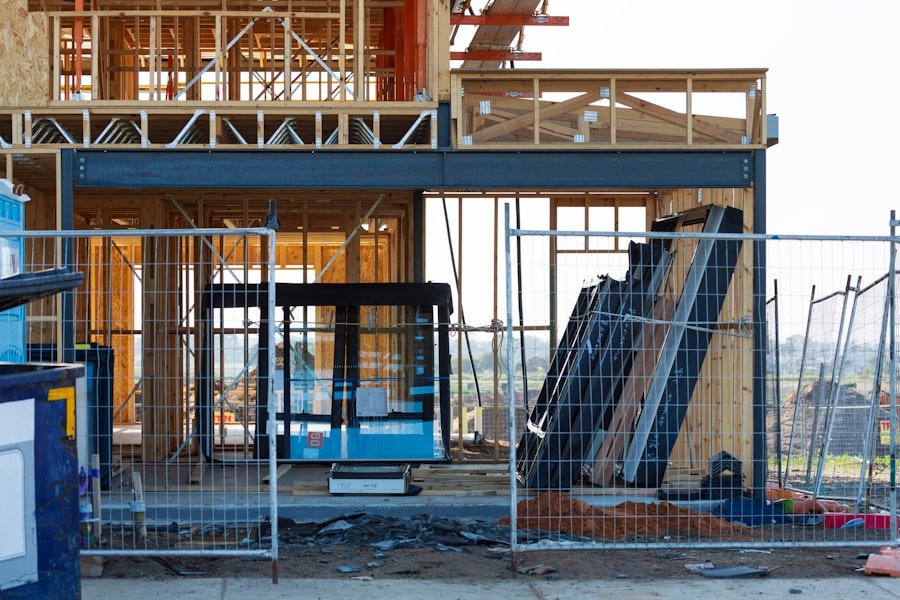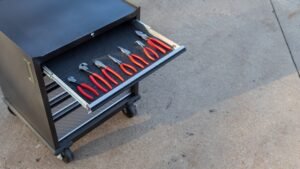Switches are fundamental components in electrical systems and DIY projects. They control the flow of electricity, allowing users to turn devices on and off or adjust their functionality. Switches come in various types, including toggle, rocker, push-button, and touch-sensitive designs, catering to different aesthetic preferences and practical needs.
The versatility of switches makes them suitable for a wide range of applications, from simple household lighting to complex industrial controls. They can be used to operate lights, fans, appliances, and other electrical devices. Some advanced switches offer dimming capabilities or can be integrated with smart home systems for remote control.
When selecting switches for a project, factors to consider include voltage and current ratings, environmental conditions, and the specific requirements of the application. Proper installation and use of switches are crucial for safety and functionality. Regular maintenance, such as cleaning and checking for loose connections, can help ensure the longevity and reliability of switches in any electrical system.
Key Takeaways
- Switches are versatile tools that are essential for DIY projects.
- There are different types of switches, each with their own specific uses.
- When choosing a switch for your DIY project, consider factors such as the type of circuit and the load it will control.
- Safety is important when using switches, so make sure to follow proper installation and usage guidelines.
- Switches can be used creatively in DIY projects to add functionality and convenience.
Understanding the Different Types of Switches and Their Uses
Basic Switches
The most common type of switch is the single-pole switch, which is used to control a single fixture or appliance from one location. These switches are typically used for basic on/off functions and are the most commonly found in residential settings. Another common type of switch is the three-way switch, which is used to control a single fixture or appliance from two different locations. These switches are often used in stairways, hallways, and large rooms where multiple access points are needed.
Specialized Switches
In addition to these basic types of switches, there are also more specialized options available. Dimmer switches, for example, allow you to adjust the brightness of a light fixture or control the speed of a fan. These switches are great for creating ambiance and setting the mood in any room. Another popular option is the timer switch, which allows you to set specific times for your lights or appliances to turn on and off automatically.
Smart Switches
Finally, there are also smart switches available that can be controlled remotely using a smartphone or other smart devices. These switches offer added convenience and flexibility, allowing you to control your devices from anywhere with an internet connection.
How to Choose the Right Switch for Your DIY Projects

When choosing a switch for your DIY projects, it’s important to consider the specific needs and requirements of your project. Start by identifying the type of device or fixture you want to control, as well as the specific functions you want the switch to perform. For example, if you’re looking to control the brightness of a light fixture, a dimmer switch would be the best option.
If you need to control a device from multiple locations, a three-way switch would be more suitable. Additionally, consider the style and design of the switch to ensure it complements the overall aesthetic of your project. It’s also important to consider the electrical requirements of your switch.
Make sure to choose a switch that is compatible with the voltage and current rating of your electrical system. If you’re unsure about the electrical requirements of your project, it’s best to consult with a professional electrician to ensure that you choose the right switch for your specific needs. Finally, consider any additional features or capabilities that you may need from your switch.
For example, if you want the ability to control your devices remotely, consider investing in a smart switch that offers this functionality. By carefully considering these factors, you can choose the right switch for your DIY projects and ensure that it meets all of your specific needs.
Tips for Using Switches Safely and Effectively
| Tips for Using Switches Safely and Effectively |
|---|
| 1. Always turn off the power before working on switches. |
| 2. Use insulated tools when working on switches. |
| 3. Test the switch with a voltage tester before touching it. |
| 4. Replace old or damaged switches promptly. |
| 5. Follow proper wiring diagrams when installing new switches. |
Using switches safely and effectively is essential for any DIY project. To ensure safe operation, always follow the manufacturer’s instructions and guidelines when installing and using switches. Make sure to turn off the power to the circuit before working with any electrical components, and use proper safety equipment such as insulated gloves and goggles when handling electrical wiring.
Additionally, always use switches that are rated for the specific voltage and current requirements of your electrical system to prevent overheating and potential fire hazards. When installing switches, make sure to properly secure all wiring connections and use wire nuts or terminal blocks to prevent loose connections. It’s also important to test your switches after installation to ensure they are functioning properly before closing up any walls or fixtures.
If you encounter any issues with your switches, such as flickering lights or overheating, it’s important to address these problems immediately to prevent any potential safety hazards. Finally, always label your switches and circuit breakers to make it easy to identify and control specific devices or fixtures in your home. By following these tips, you can use switches safely and effectively in your DIY projects while minimizing the risk of electrical hazards.
Creative Ways to Incorporate Switches into Your DIY Projects
Switches can be used in a variety of creative ways to enhance the functionality and design of your DIY projects. For example, consider using dimmer switches to create custom lighting designs that can be adjusted to suit different moods and occasions. You can also use timer switches to automate the operation of lights or appliances in your home, making it easy to save energy and enhance security.
Additionally, consider using smart switches that can be controlled remotely using a smartphone or other smart devices for added convenience and flexibility. In addition to their functional uses, switches can also be used as design elements in your projects. Consider using decorative switch plates and covers to add a touch of style and personality to your home decor.
You can also use unique switch designs such as touch-sensitive switches or motion-activated switches to create a modern and futuristic look in any room. Finally, consider incorporating switches into custom furniture designs or built-in fixtures to create seamless and integrated control systems for your devices. By thinking creatively about how you incorporate switches into your projects, you can enhance both the functionality and aesthetic appeal of your DIY creations.
Maintenance and Care for Your Switches

Regular Inspections
Regularly inspect your switches for any signs of wear or damage, such as loose connections or cracked covers. If you notice any issues with your switches, such as flickering lights or difficulty operating the switch, it’s important to address these problems immediately to prevent any potential safety hazards.
Cleaning and Testing
Additionally, make sure to clean your switches regularly using a soft cloth and mild detergent to remove any dirt or grime that may accumulate over time. It’s also important to test your switches periodically to ensure they are functioning properly. Turn on and off each switch in your home to check for any issues with operation or performance.
Addressing Problems
If you encounter any problems with your switches, such as inconsistent operation or overheating, it’s important to have them inspected by a professional electrician to determine the cause of the issue and make any necessary repairs or replacements. By taking these proactive measures, you can ensure that your switches continue to operate safely and effectively for years to come.
Why Every DIYer Needs to Have Switch in Their Toolbox
In conclusion, switches are an essential tool for any DIYer looking to control the flow of electricity in their projects. With a wide variety of options available, including single-pole switches, three-way switches, dimmer switches, timer switches, and smart switches, there is a switch available to suit any project or design preference. By understanding the different types of switches available and how to choose the right switch for your specific needs, you can ensure that your DIY projects are safe, functional, and stylish.
Additionally, by following tips for using switches safely and effectively, thinking creatively about how to incorporate switches into your projects, and maintaining and caring for your switches properly, you can enhance both the functionality and aesthetic appeal of your DIY creations while ensuring their long-term performance and reliability. Whether you’re looking to control lighting, fans, appliances, or other electrical devices in your home or workspace, having the right switches in your toolbox is essential for achieving your desired results. With their versatility and functionality, switches are an indispensable tool that every DIYer should have at their disposal.
If you’re looking to stay updated on the latest entertainment news, be sure to check out the exclusive article on Aquaman and the Lost Kingdom: A Drenched Odyssey of Fun and Mayhem. This article provides an in-depth look at the highly anticipated sequel and what fans can expect from the underwater adventure.
FAQs
What is Tools Up for the Nintendo Switch?
Tools Up is a cooperative multiplayer game for the Nintendo Switch where players work together as a team of renovators to complete various home improvement tasks within a time limit.
How many players can play Tools Up on the Nintendo Switch?
Tools Up supports up to four players in local multiplayer mode on the Nintendo Switch, allowing friends and family to join in the renovation fun together.
What are the main features of Tools Up for the Nintendo Switch?
The main features of Tools Up for the Nintendo Switch include a variety of levels with different renovation tasks, the ability to work together with friends to complete challenges, and the option to customize characters and apartments.
Is Tools Up available for online multiplayer on the Nintendo Switch?
As of the time of writing, Tools Up for the Nintendo Switch does not support online multiplayer. The game is designed for local cooperative play with friends and family.
Can players customize their characters in Tools Up for the Nintendo Switch?
Yes, players can customize their characters in Tools Up for the Nintendo Switch by choosing from a variety of different outfits and accessories to personalize their renovator.




















+ There are no comments
Add yours